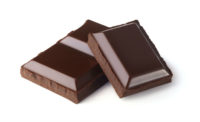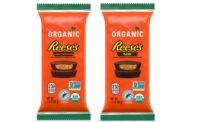NCA State of Treating report: Total confectionery retail sales projected to reach $44.9B by 2026
Report showed consumers want brands to promote sustainability, engage on social media, offer a variety of portion sizes.

The 2022 NCA State of Treating report showed that chocolate had $21.1 billion in total sales, while non-chocolate had $12.7 billion, and gum and mints had $3.1 billion in total sales. All three combined totaled $36.9 billion in sales.
By all accounts the "State of Treating" is good. The total confectionery category hit $36.9 billion in retail sales in 2021, and it’s not expected to slow down. In fact, it’s projected to reach $44.9 billion in sales by 2026.
That’s according to the new National Confectioners Association State of Treating report, which was released during the 2022 State of the Industry event.
The report also included IRI data for category sales for the latest 52 weeks ending Dec. 26, 2021.
It showed that dollar sales growth was:
- Up 9 percent for chocolate
- Up 14.5 percent for non-chocolate
- Up 3.8 percent for gum and mint
Chocolate had $21.1 billion in total sales, while non-chocolate had $12.7 billion, and gum and mints had $3.1 billion in total sales, according to the report. All three combined totaled $36.9 billion in sales.
“Sales of chocolate and candy grew significantly this past year as consumers looked to prioritize their emotional well-being and created a special and unique place for these treats in their lives,” said John Downs, NCA president and CEO. “A key takeaway from the report is that in contrast to rising costs for families related to inflation, health care and simply putting food on the table, candy remains a simple, affordable treat. Whether consumers found their inspiration on social media or in the grocery aisle, they reached for chocolate and candy as a means of self-care and enjoyment in an otherwise uncertain time.”
The report offered some consumer insights as well.
Where people are buying candy
Shopping patterns have changed rapidly over the last two years, but grocery stores are still a vital part of the retail experience for a majority of consumers.
The NCA said 71 percent of shoppers mostly purchase everyday confectionery at their primary grocery store. And 56 percent of shoppers mostly purchase seasonal confectionery at their primary grocery store.
A large majority (91 percent) of consumers also report taking road trips, and of these consumers, 83 percent sometimes or always include chocolate and candy in their travels.
Consumers expect candy brands to be on social media
The report showed that 4 in 10 consumers are connected to a store or confectionery brand on social media.
Two-thirds (66 percent) of Americans have researched candy gifting, baking with candy, or other inspirational ideas on social media. In addition, 42 percent of TikTokers participate in food challenges.
Candy consumers seek well being
Significantly, the report showed that almost all (9 in 10 consumers) are interested in learning about a confectionery brand’s environmental commitments and social responsibility practices on the package label, the brand’s website or social media.
Nearly three-quarters (72 percent) of consumers believe that physical health and emotional well-being are interconnected, while 78 percent of all adults believe it is fine to occasionally treat with chocolate or candy.
Almost half (47 percent) of consumers occasionally purchase confectionery items they personally deem to have a “better-for-you” profile, though how that determination is made varies widely between demographic groups.
Candy is also a social experience, with 88 percent of consumers reporting that they share with family and friends at least half the time when buying chocolate and candy.
And 72 percent of consumers agree that it is important for chocolate and candy brands to offer portion size variety.
“In 2021, consumers found even more creative ways to celebrate holidays and special occasions, and they continued to turn to chocolate and candy to bring a little fun to those experiences,” Downs said. “The shift to home-centricity has meant new opportunities for confectionery companies and their retail partners as consumers seek new treating moments with new items, new pack sizes and new brands.”
The NCA's 2022 State of Treating report is made possible by Blommer Chocolate Company. For a taste of the 2022 State of Treating report, please visit CandyUSA.com/StateOfTreating or click here for the PDF.
Looking for a reprint of this article?
From high-res PDFs to custom plaques, order your copy today!










